Rats Trained to “Play” DOOM II Map In Modified VR, Shooting Requires Further Research
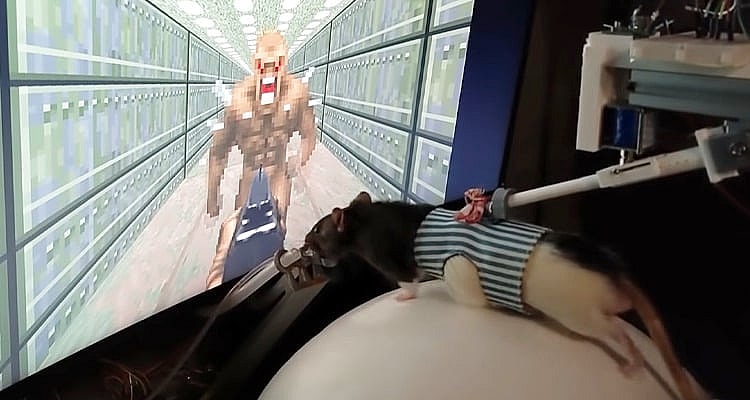
Using a VR-like set up so the character moves as the rats walk, a man has managed to train three rats to “play” a simplified game of DOOM II.
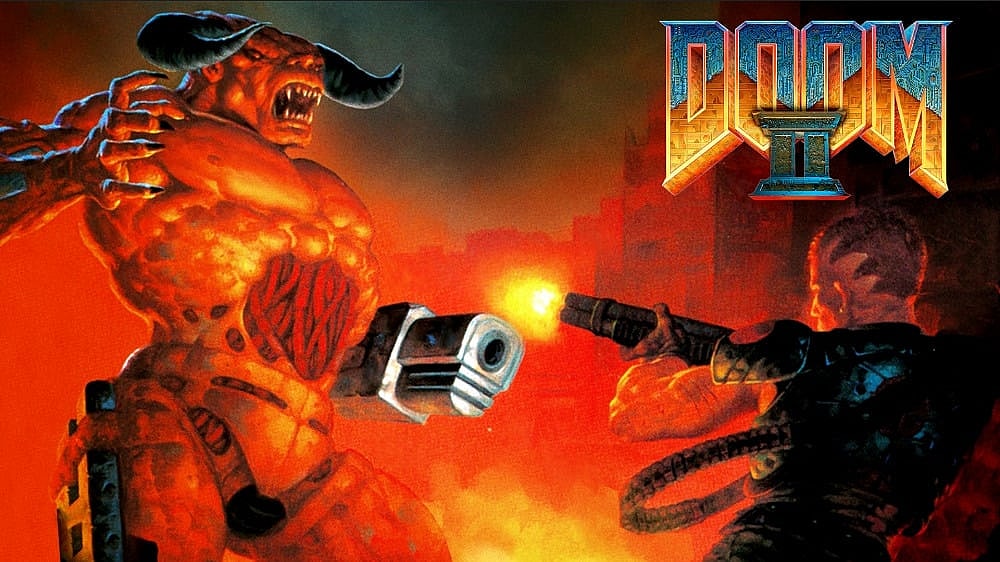
As explained by neuroscience researcher Viktor Tóth in a Medium post, he trained three rats to navigate corridors rendered in the DOOM II engine without manual intervention or using surgical procedures, all with a VR set up costing under $2,000.
To accomplish this, a rat is placed in a special harness on a rotating ball, in front of a large curved screen. Motion sensors detect the movement in the ball, and subsequently translate their input to in-game movement.
In encouraging the desired behavior, the rats would be given either sugary water if they went the right way, or a small puff of air if they hit a wall, as had been used in other rat VR experiments.
After training the rats to realize that their own walking prompts the ball to move under their feet and dispensing the delicious sugar-water, Tóth found that the rodents had learned to walk to the exit sign of a short corridor – a development which could be seen as an evolution of other experiments involving lab animals navigating a maze to find food.
Training the rats to shoot a monster was slightly more difficult. As with the ball rolling, machines would have to perform the action for the rat the first few times – in this case, rearing the rat up its hind legs to trigger a button and blast a stationary and docile monster.
The three 8-week old rats – hilariously named Romero, Carmack, and Tom after the co-founders of original DOOM developer iD software – went under 1 hour of training and experimentation a day for six weeks. Most of this time was spent getting the rats used to the strange behaviors they would have to undergo, though the last 11 days were spent actually experimenting with the full Doom VR setup.
“Romero outperformed the others in general,” Tóth notes, “though Tom was the first to actually walk on its own without the help of the motorized ball roller. I had two sessions to train shooting with Romero, who was pretty confident running in VR at that point.”
However, according to the researcher, two sessions provided less than sufficient results, as in them, Romero found himself confused by the machine lifting him up, choosing to ram into the monster rather than lean forward to push the button and shoot it. As noted in the summary at the top of Tóth’s post, he “lacked the time to actually reinforce the [correct] behavior.”
In conclusion to his findings, Tóth asks what many are sure to be thinking – Why?
As he explains, the playing DOOM II involves a wide variety of cognitive processes- whether the player be a rat or human – and as such, he designed his experiment to allow for the recording of behavior via a neural interface.
Thus, he found, movement and in-game actions can be “correlated with neural activity in a virtual, yet more natural, lively set of experiments, than in simple maze setups for instance.”

The ease and variety of virtual worlds that can be made was also noted, with Tóth further noting that once animals are reliably trained, designing experiments becomes a software issue rather than a costly hardware one.
Nonetheless, Tóth admits training animals to perform these complex and context-dependent actions in VR is difficult, and something he had hoped to automate.
“However, even after 11 days of VR training,” Tóth states, “I had to be present and help the rats to get on or off the ball, as they desired. Although their training was software-based, it still required my presence.”
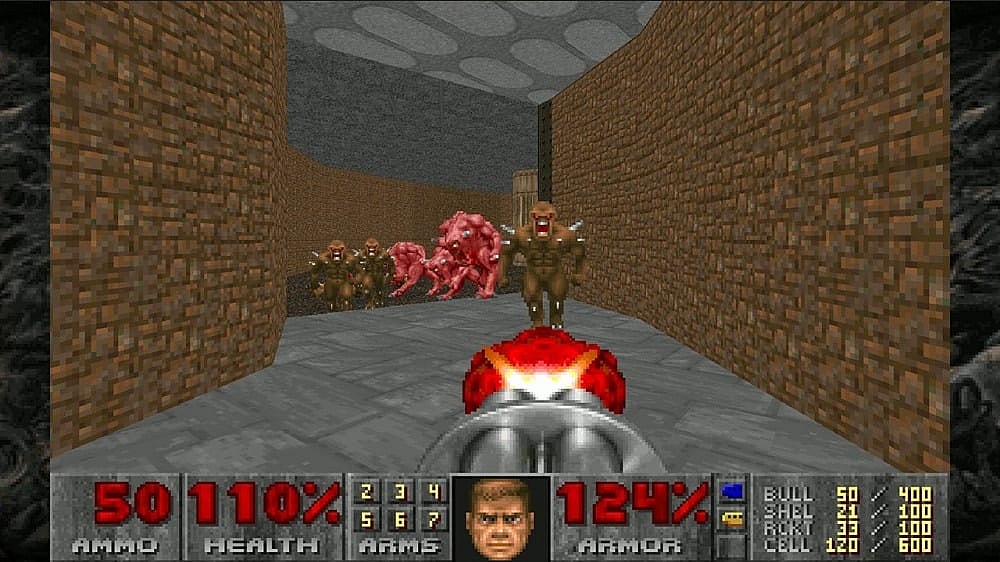
One wonders how long Tóth would have needed to fulfill his desire for the rat to complete the basic corridor with minimal human involvement, and how far the rats would have ultimately gone. After all, Tóth himself even admits that the experiment could have been improved through such ways as using a nose-poke system for shooting rather than rearing and receiving more time to train the rats to turn.
Other game playing animals have included pigs who learned to play a modified version of Pong, a goldfish who ‘played’ Pokemon Red, and a monkey who learned to control Pong with its mind courtesy of implants provided by the Elon Musk-founded neurotechnology company Neuralink.
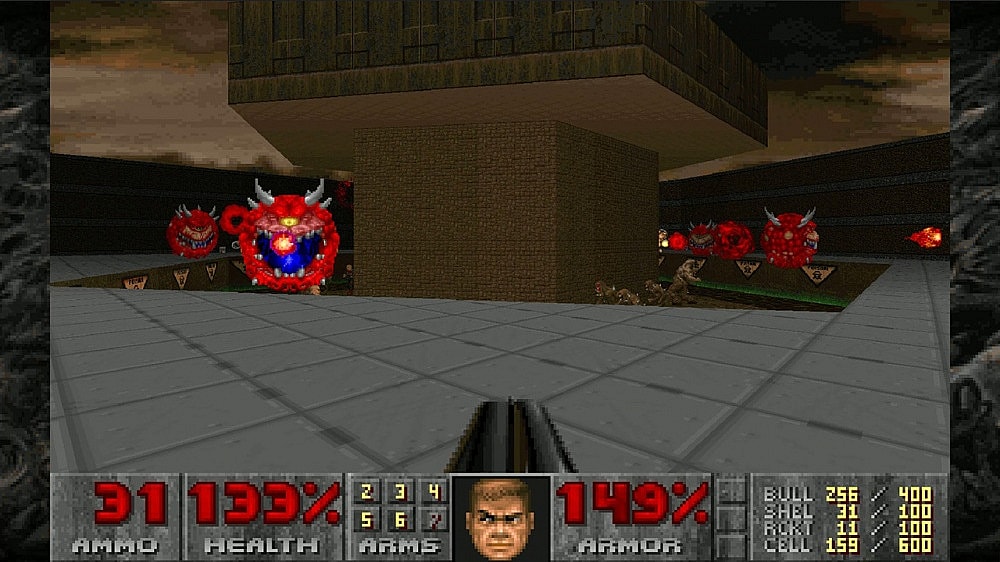
All of the above examples of animals learning to play video games are sure to be more than condemning for contemporary game journalists, a staggering majority of whom regularly struggle to beat the games they are supposed to cover, such as PC Gamer journalist James Davenport, who admitted to using mods to beat Sekiro’s final boss – a decision which resulted widespread mockery and memes.
In another instance, VentureBeat’s Dean Takahashi struggling to complete even the clearly-labeled tutorial for Cuphead in 2017 helped kickstart the criticism of game journo skill in earnest. Even after eventually completing the tutorial, he didn’t do much better with the rest of the game’s demo.
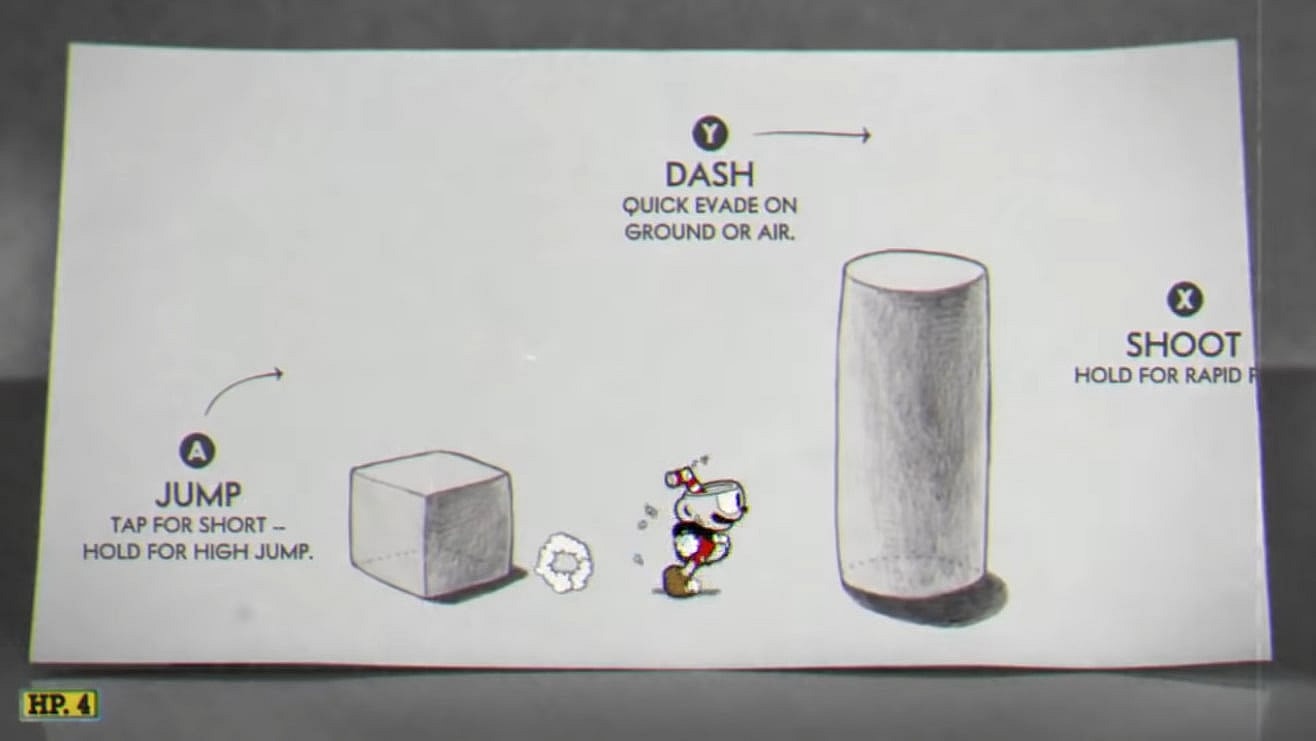
Are animals just following stimuli, or will they one day be better than game journalists as we know them? Let us know your thoughts on social media or in the comments down below!
